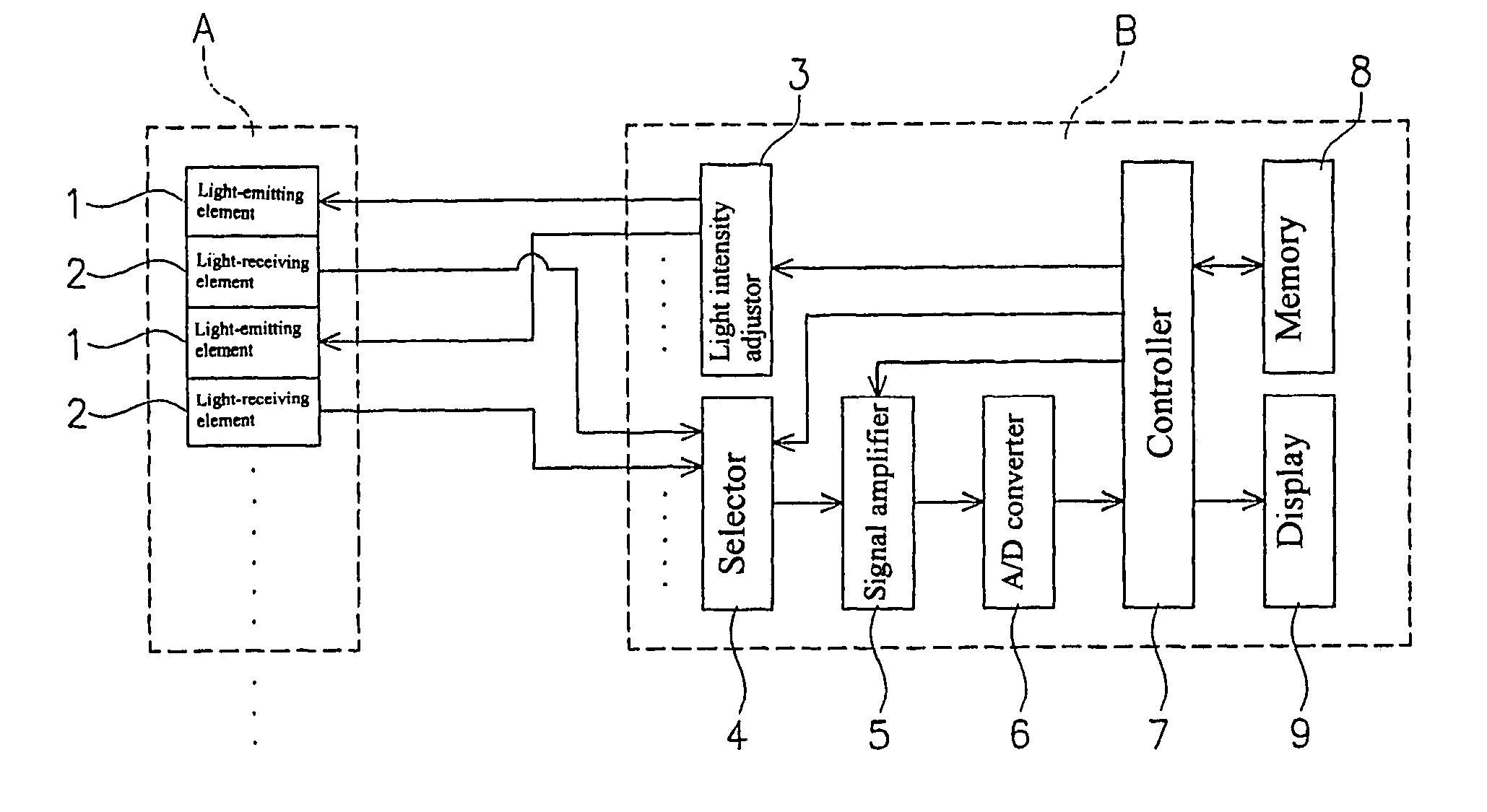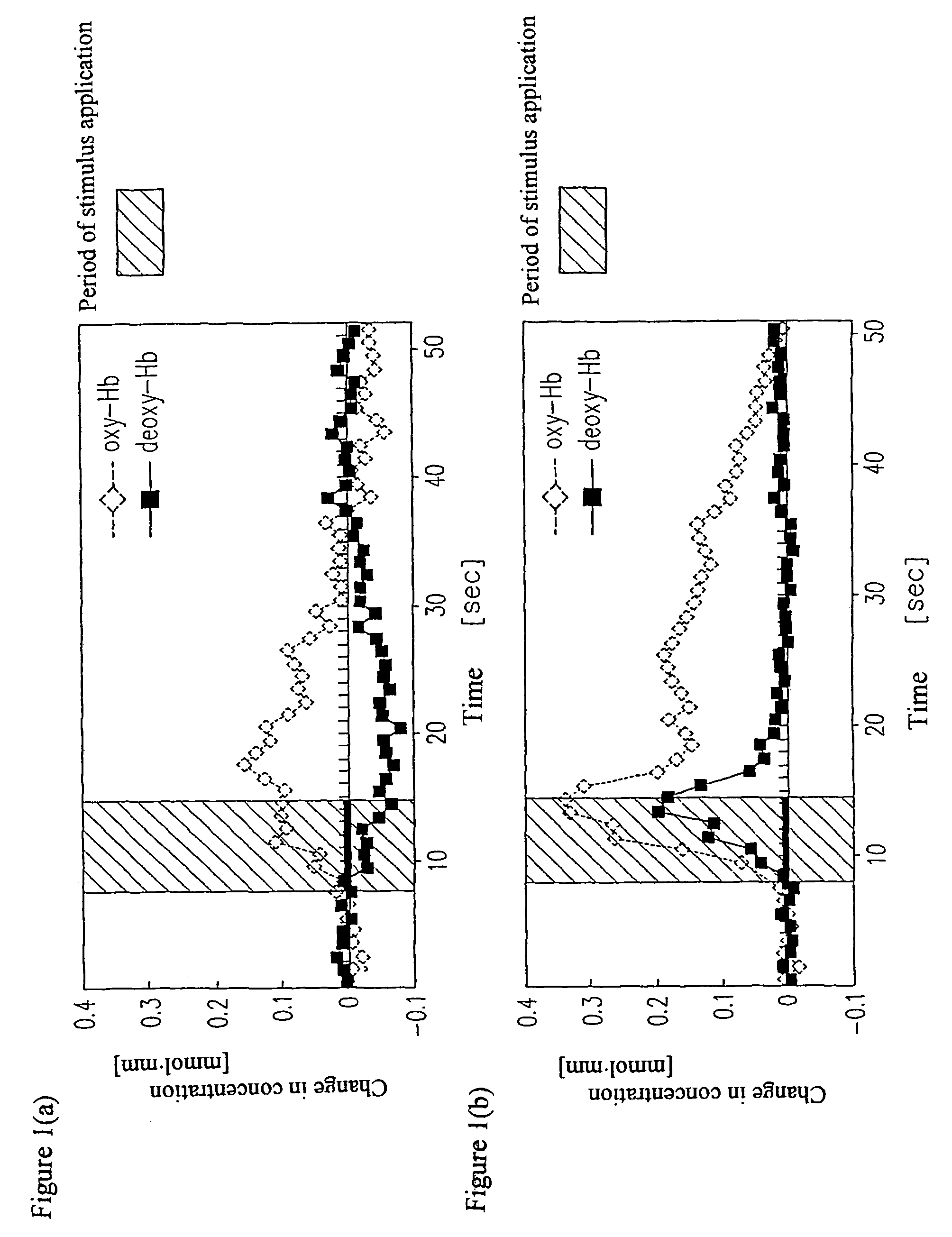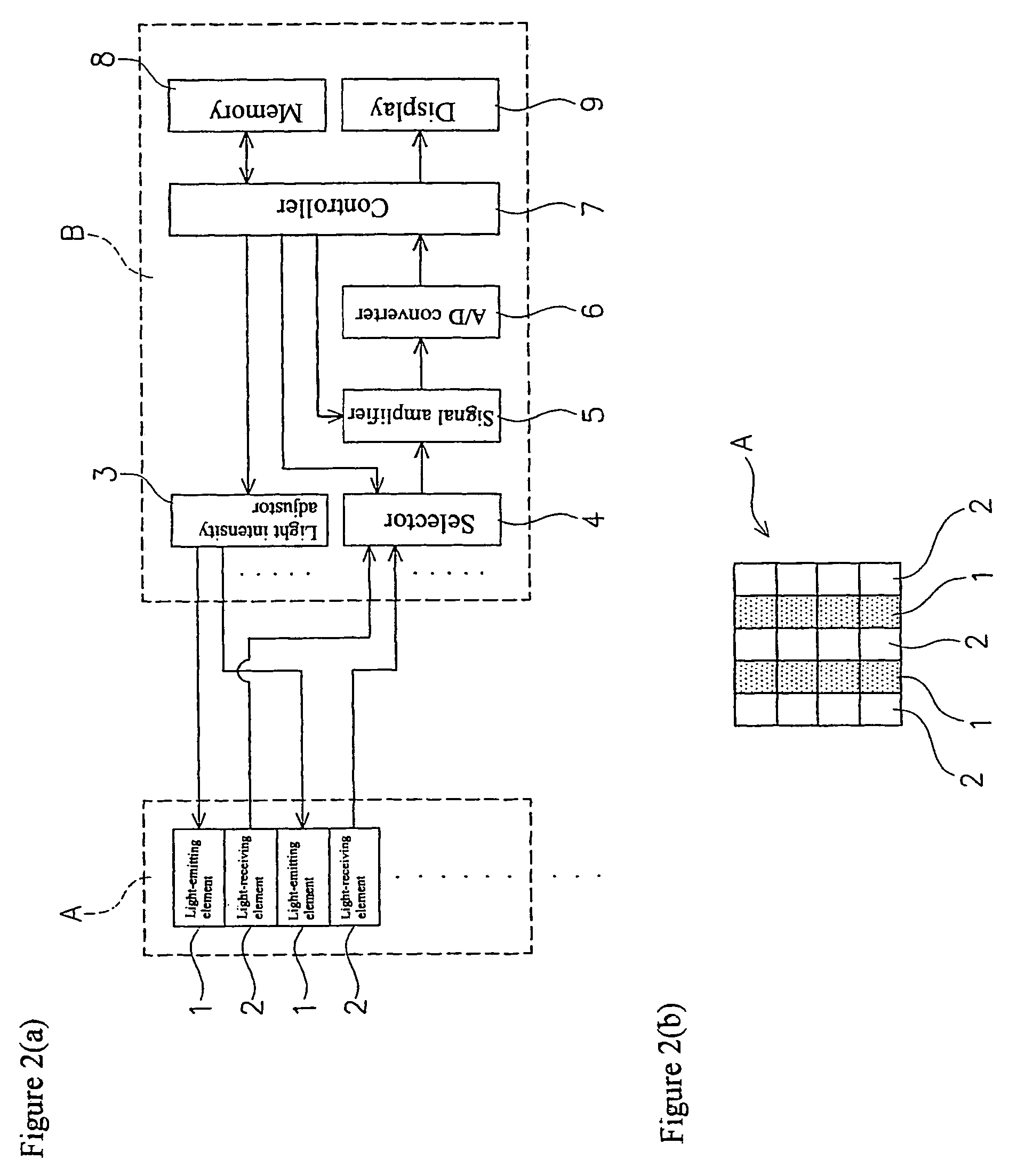Apparatus for evaluating biological function
a biological function and apparatus technology, applied in the field of apparatus for evaluating biological functions, can solve the problems of insufficient contribution to on-site medicine, inability to accurately evaluate the function, and inability to accurately measure the function, so as to reduce the amount of data processed, reduce the processing load on the decision, and improve the reliability
- Summary
- Abstract
- Description
- Claims
- Application Information
AI Technical Summary
Benefits of technology
Problems solved by technology
Method used
Image
Examples
Embodiment Construction
[0029]One working embodiment of the apparatus for evaluating biological function of the present invention is described below, with reference to the drawings.
[0030]FIG. 2(a) shows a block diagram of the apparatus for evaluating biological function of the present working embodiment. This apparatus for evaluating biological function is roughly divided into a plurality of probes A . . . and the main body of the apparatus B. Probe A is composed of at least two light-emitting elements (light-emitting diodes) 1 . . . that irradiate light to desired measurement sites (tissue) of a living body, and at least two light-receiving elements (photodiodes) 2 . . . that sense light, e.g., transmitted, reflected, scattered or diffused light, from the measurement site after it has interacted with the living body. The main body of the apparatus B is composed of a light intensity adjustor 3 that adjusts the intensity of the light emitted from light-emitting elements 1 . . . ; a selector 4 that selective...
PUM
| Property | Measurement | Unit |
|---|---|---|
| diameter | aaaaa | aaaaa |
| size | aaaaa | aaaaa |
| thickness | aaaaa | aaaaa |
Abstract
Description
Claims
Application Information
 Login to View More
Login to View More - R&D
- Intellectual Property
- Life Sciences
- Materials
- Tech Scout
- Unparalleled Data Quality
- Higher Quality Content
- 60% Fewer Hallucinations
Browse by: Latest US Patents, China's latest patents, Technical Efficacy Thesaurus, Application Domain, Technology Topic, Popular Technical Reports.
© 2025 PatSnap. All rights reserved.Legal|Privacy policy|Modern Slavery Act Transparency Statement|Sitemap|About US| Contact US: help@patsnap.com



